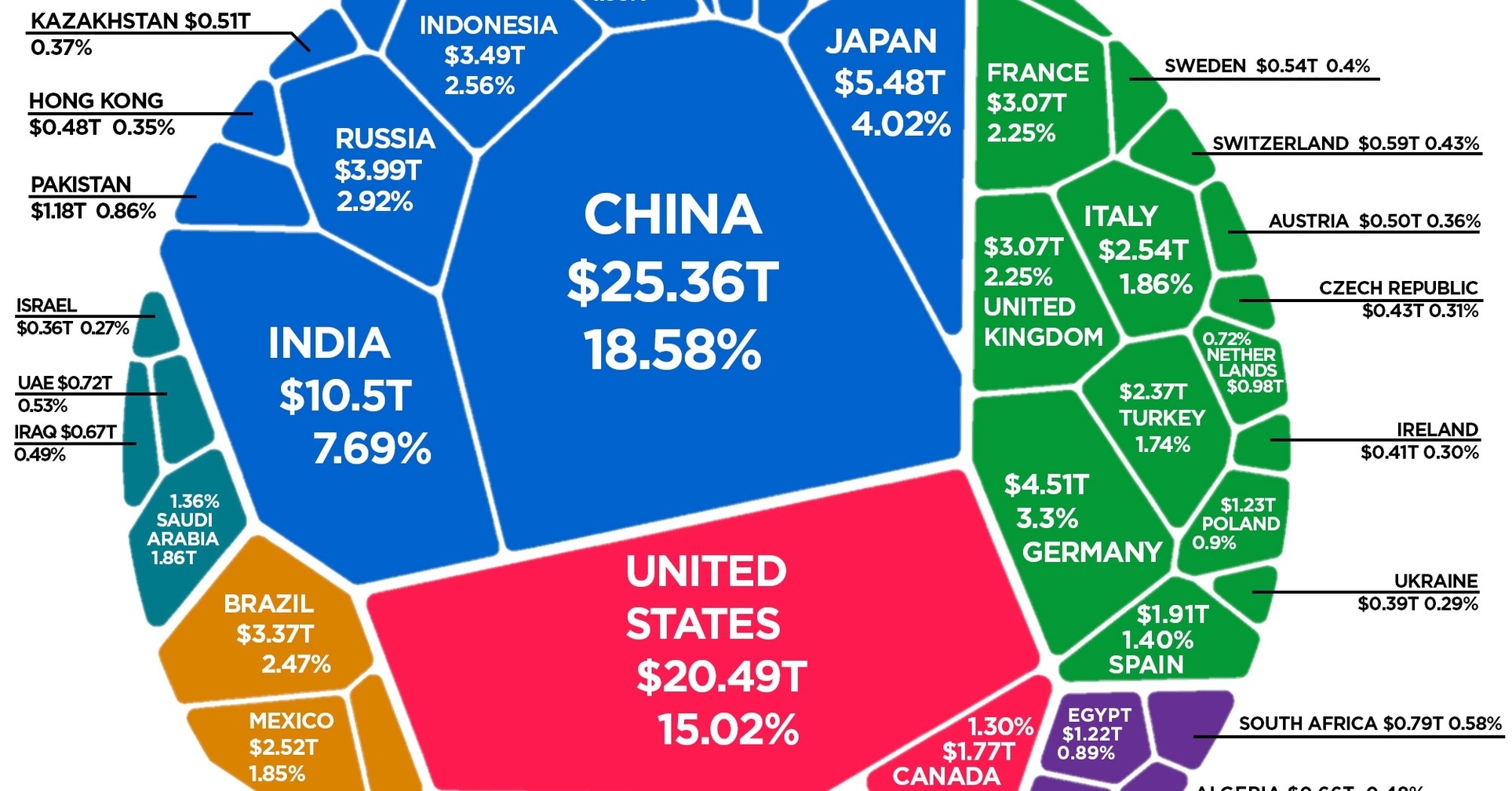
The composition of the world economy by GDP (PPP) is a way of measuring the relative size and productivity of different countries or regions based on their gross domestic product (GDP) adjusted for purchasing power parity (PPP). GDP is the total value of goods and services produced within a country or region in a given period of time. PPP is a method of comparing the prices and costs of living across different countries or regions, taking into account the differences in exchange rates, inflation, and quality of goods and services. By using GDP (PPP), we can compare the economic output and living standards of different countries or regions more accurately than using nominal GDP, which is based on current market exchange rates.
According to the International Monetary Fund (IMF), the world economy in 2023 is projected to be worth about $136.5 trillion in current international dollars, based on GDP (PPP) estimates. The top 10 economies by GDP (PPP) in 2023 are expected to be:
– China: $25.4 trillion (18.6% of world total)
– United States: $20.5 trillion (15.0% of world total)
– India: $10.5 trillion (7.7% of world total)
– Japan: $5.5 trillion (4.0% of world total)
– Germany: $4.5 trillion (3.3% of world total)
– Russia: $4.0 trillion (2.9% of world total)
– Indonesia: $3.5 trillion (2.6% of world total)
– Brazil: $3.4 trillion (2.5% of world total)
– United Kingdom: $3.1 trillion (2.3% of world total)
– France: $3.1 trillion (2.3% of world total)
These 10 economies account for about 61% of the world’s GDP (PPP) in 2023. The remaining 39% is shared by 186 other economies, ranging from $1.9 trillion (Spain) to $0.01 trillion (Tuvalu). The average GDP (PPP) per capita in the world in 2023 is estimated to be about $17,500, but there is a wide variation among countries and regions, from $131,000 (Qatar) to $800 (Burundi).
The composition of the world economy by GDP (PPP) reflects the economic power and potential of different countries and regions, as well as their challenges and opportunities. It also shows the diversity and complexity of the global economic system, which is influenced by many factors such as population, geography, natural resources, technology, trade, politics, culture, and history. By using GDP (PPP), we can better understand the similarities and differences among countries and regions, and how they interact and cooperate in the global market..
